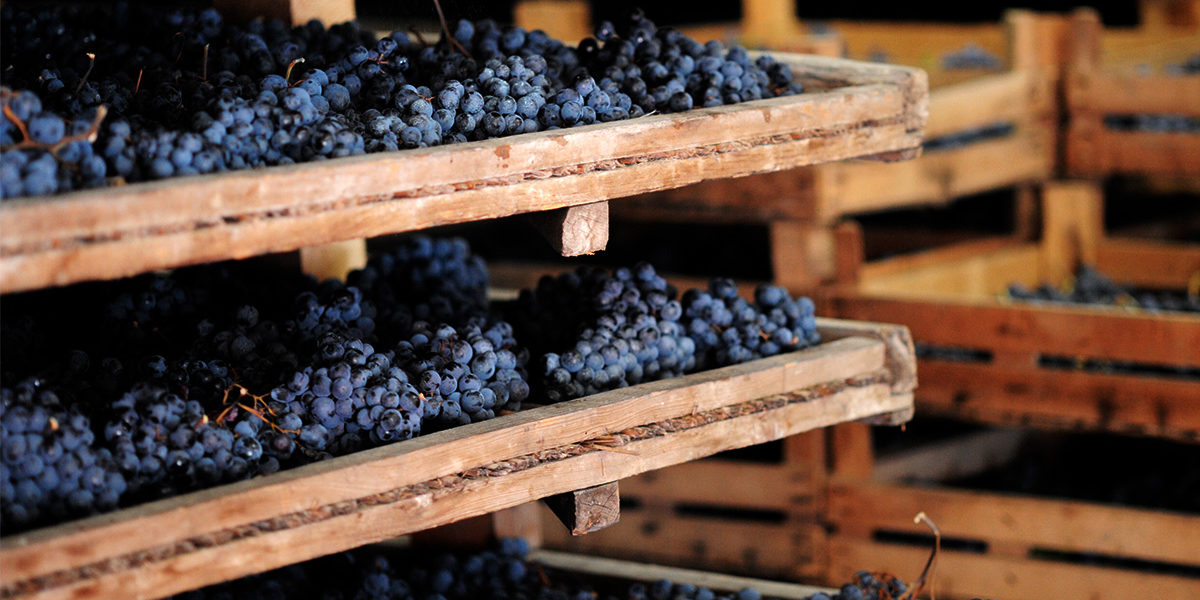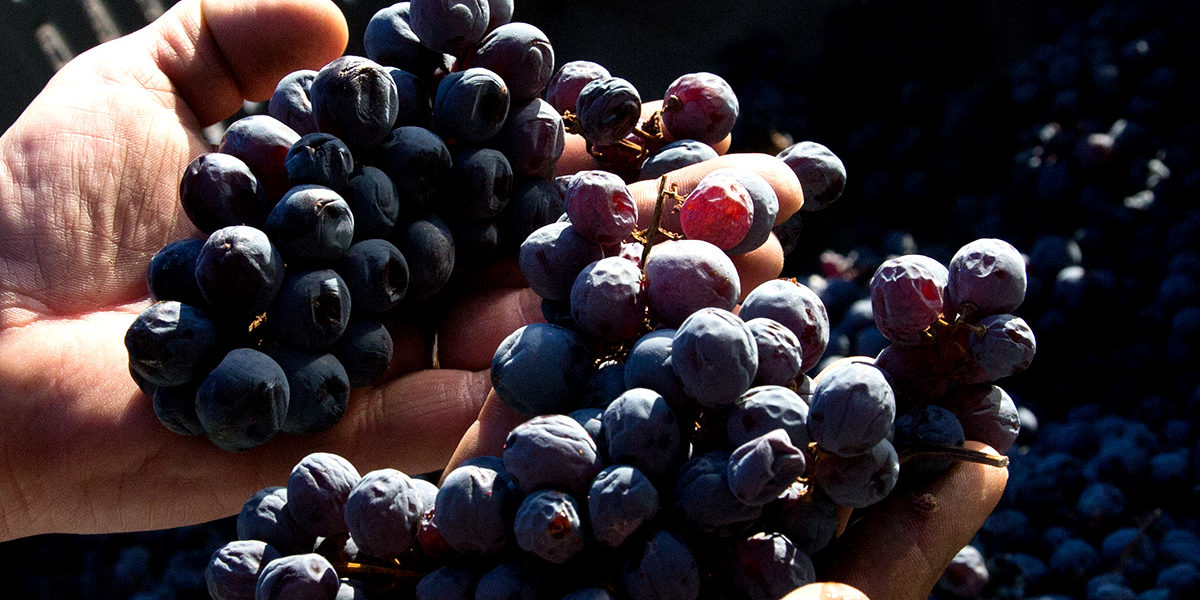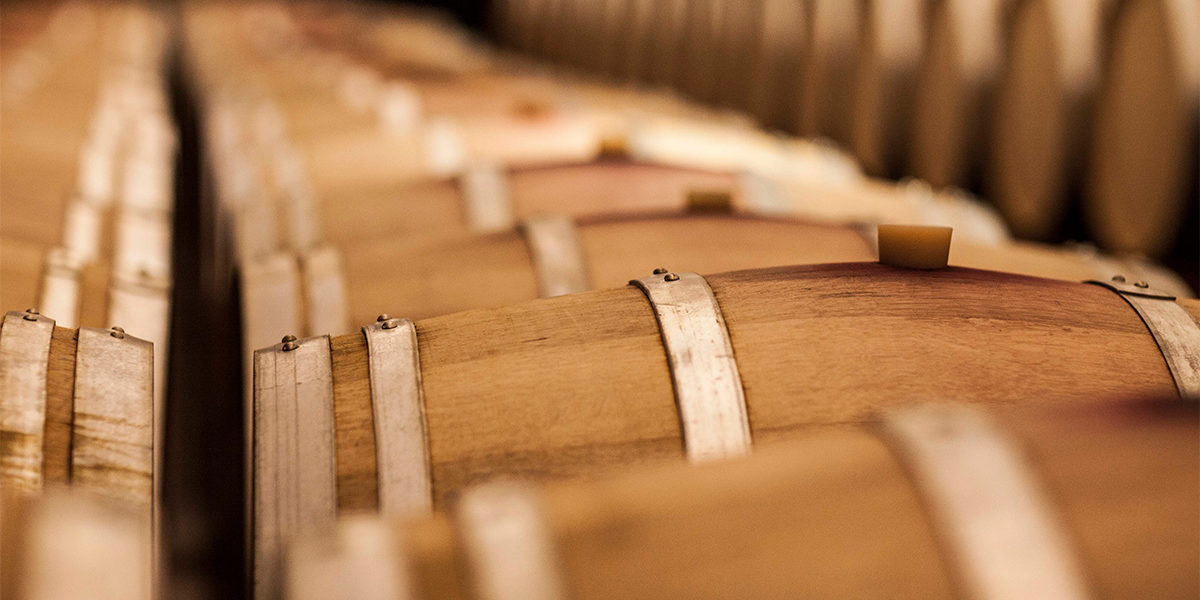
Amarone history and fun facts.
Amarone della Valpolicella is a dry red wine made from raisined grapes and produced exclusively in Valpolicella, in five specific production areas:
1.Valpolicella classica
2.Valpantena
3.Val Tramigna
4.Val d’Illasi
5.Val di Mezzane
Therefore, Amarone is produced exclusively in the Province of Verona, in nineteen districts of the northern hillside area: Dolcè, Verona, San Martino Buon Albergo, Lavagno, Mezzane, Tregnago, Illasi, Colognola ai Colli, Cazzano di Tramigna, Grezzana, Pescantina, Cerro Veronese, San Mauro di Saline and Montecchia di Crosara; in particular, the wines produced in the five remaining villages, called Marano, Negrar, Fumane, Sant’Ambrogio and San Pietro in Cariano, are the only ones which can claim the title “Classico”, because they are of the most ancient tradition.
All the stages of production of Amarone wine must (without fail) be carried out within this precise geographical area.
Fun facts: the toponym “Valpolicella” derives from Latin and, more precisely, from the wording “vallis polis cellae”, which means “the valley with many wine-cellars”, and this speaks volumes about the local wine production traditions, which date back over thousands of years.
Amarone is produced in variable proportions from different varieties of vine. The dominant one (in a percentage which goes from 40 to 70%) is Corvina Veronese, also locally called Cruina or, simply, Corvina; Rondinella and Molinara are also used, but in smaller proportions: the first one from 20 to 40%, the latter from 2 to 25%. Rossignola, Trentina, Sangiovese, Barbera and Negrara grapes may also be used up to 15%, in various proportions or pure; finally, it is also possible to add a small quantity (maximum 5%) of other grapes produced from authorised and approved vines, in the Verona province.
The wine is of an intense ruby red colour, which acquires, with time, orange or brick-colour shades.
Its aroma is strong, spicy and lingering, with hints of walnuts, cherries and wild berries, and notes of spices and chocolate. In the most aged versions, you can perceive a hint of tree moss and tar, technically referred to as “goudron”.
The taste of this wine is definitely dry, vigorous and full-bodied, but at the same time it is smooth and balanced, with a typical pleasantly bitter aftertaste which characterises it.
Amarone is a unique wine, structured and mellow, which can be appreciated both young, when its fruity aroma is exalted, and aged, when its polyphenols, the tree moss and tar scents become dominant.
Origins of the name “Amarone”
The name of this structured red wine from Verona, comes form the word “amaro”, which in Italian means “bitter”. This word has been chosen in order to distinguish Amarone from a sweet wine, Recioto della Valpolicella, from which Amarone accidentally derived. In fact, Recioto corresponds (as far as area, grape type and blends are concerned) to Amarone, but the first one is a sweet raisined wine, whereas the latter is a dry raisined wine.
The epithet “Amarone”, used to refer to Recioto Amaro (“bitter” Recioto) or Recioto Secco (dry Recioto) was chosen in spring 1936 in “Cantina sociale di Valpolicella” (Valpolicella winery), at that time located in Villa Mosconi in Arbizzano di Valpolicella. «This is not Amaro, it is Amarone!» exclaimed the cellar supervisor, Gaetano Dall’Ora, one day in 1936, after tasting some Recioto which had been accidentally left fermenting longer than it should have been. Therefore, the name of the wine which is now the symbol of Valpolicella, comes from these words.
“Cantina Sociale di Negrar” (Negrar winery) rightly displays in its hall a waybill dating back to 1942, mentioning “Flaskets of Amarone 1938”. Hence that Recioto, barrelled and then forgotten about, went on fermenting till it became dry. All its sugars were transformed into alcohol and the sweetness of the wine was lost: this is the reason why it was called Amarone, to distinguish it from what it was meant to be at first. After discovering its taste, the expert winemakers of the area spent years refining its production techniques, in order to reach a perfect result. Sometimes, during the first production “attempts”, the wine happened to be still sweet, but with an almond aftertaste, maybe due to a Recioto batch in which fermentation had gone out of hand.
Some “Bitter Wine” had already been mentioned during Catullo’s times: in his poem “Carme n. 27” (dating back to about 49 BC) he wrote about “calices amariores”, which means “more bitter glasses”. Other important documents refer to this wine, too.
Cassiodoro, at the beginning of the 5th century, was looking for the Acinatico della Valpolicella, red and white, for the table of Theodoric, the Ostrogoth king: as G.B. Peres pointed out in 1900, the above mentioned wine is believed to be a “recchiotto amaro” (bitter Recioto). This opinion corresponds to that of Panvinio, who stated that Cassiodoro’s “Acinàtico” was actually Augustus’s “Retico”. Furthermore, the historian Sarayna (1543) described the wines of Valpolicella as “dark, sweet, full-bodied and ripe”.
It is possible to find further evidence of the partiality for this wine and for the grapes that produce it, in the Edictum Rothari, which imposed very strong punishments to those who damaged the vines and high fines to those who stole the grapes. As for the documents dating after the year 1000 AD, it is possible to find some deeds of purchase and some bills of sale of vineyards located in the area where “Amarone della Valpolicella” is produced. Not only that, but the wine itself was used as a form of payment of feudal duties, as money was. In the following centuries, “Amarone della Valpolicella” was mentioned in official documents and in the writings of humanist scholars.
In 1503, a land valuation stated that the area of production of “Amarone della Valpolicella” was a rich and famous valley, thanks to its wines. This reputation was still significant during the Enlightenment period, when Scipione Maffei used the adjective “amaro” in an important text, referring to a wine «of particular grace, produced in Valpolicella».
Perhaps, more than any other, the judgement given in Paris in 1845 by some wine assessors, is worth of notice. Tasting a batch of “Rosso Austero Costa Calda” produced in San Vito di Negrar, aged 11, they stated:
“Supreme Italian wine… better than several Bordeaux and Hermitage”.
In the centuries to follow, many other writers and scholars took an interest in this wine, and towards the end of the 19th Century the first organoleptic analyses on this wine were carried out, as reported in a bulletin of the Agricultural Research Council. The first bottles of “Amarone”, without a label, appeared for the first time at the beginning of the 20th Century, and they were only destined to family and friends.
It was not until 1938 that the first label and the first sales document came forth, and “Amarone” was officially placed on the market in 1953, by Bolla winery. This was the first time that Amarone was commercialized by choice, rather than by chance.
It was an immediate success, although Amarone was appreciated then, as it is now, mainly by a restricted public of enthusiasts. In fact, the production of this wine covers only 10% of the whole local wine production, dominated by Valpolicella and Valpolicella Superiore, which are red, young and fragrant, often ready to drink, fresh and tasty.
1968 was the year of the official approval of the production specification and the DOC quality assurance acknowledgement, made with the intent of safeguarding the identity of the various wine types included in the designation “Valpolicella”: “Valpolicella Ripasso”, “Recioto della Valpolicella” and “Amarone della Valpolicella.
Not only can Amarone della Valpolicella be considered the finest wine from Veneto, but it is also one of the most important Italian red wines, highly appreciated by the most discerning wine consumers all over the world.

GreytPigeon srl
Corso Dante Alighieri, 34
ITALY · ILLASI (Verona)
PI 04367320233
+39 392 1203112
info@greytpigeon.it



